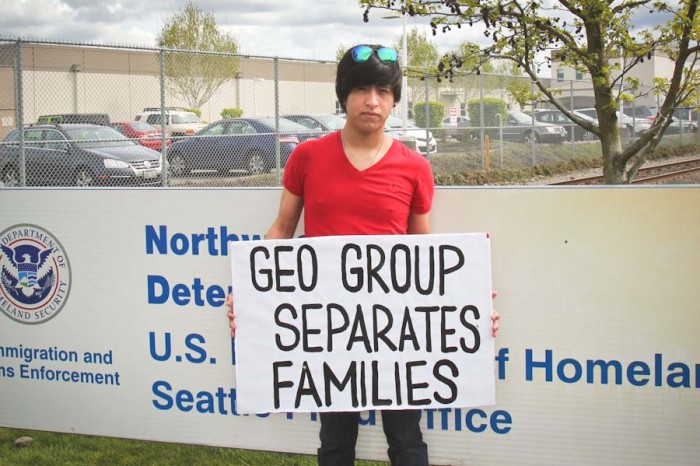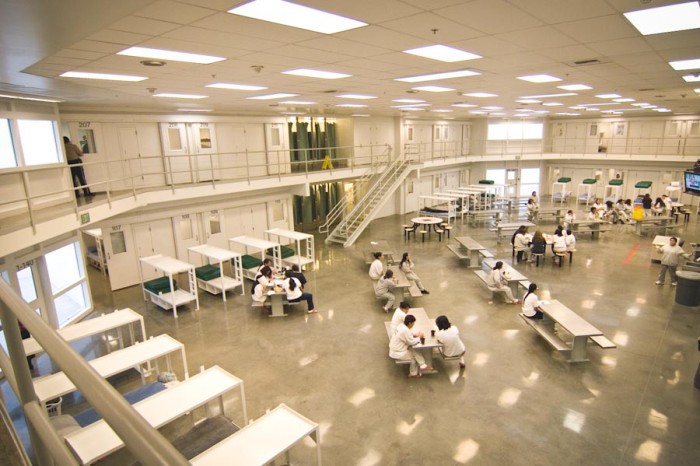
It’s not easy organizing a hunger strike inside a secure detention facility. But with nothing but time on their hands, people get resourceful.
Jose Moreno, a former detainee who participated in the strike until his release March 12, broke down some of the techniques the detainees used to organize: informal sign language, messages placed between the pages of books in the library, whispers in the kitchen, church pews and hallways.
And apparently, it’s even more difficult to maintain a hunger strike.
As of this morning just two detainees are still participating in the hunger strike at the Northwest Detention Center, according to ICE Public Affairs Officer Andrew Muñoz.
“It’s your choice to eat or not”, said Doug Honig, the Communication’s Director for the ACLU of Washington, “a hunger strike is a form of non-violent political protest and the government can’t force feed you to end that protest.”
In theory. But in reality, the two remaining hunger strikers Ramon Mendoza Pascual and J. Cipriano Rios Alegria, “continue their hunger strike in medical isolation, under solitary confinement sentences,” according to an April 21 press release from the Not One More Deportation immigration rights advocacy group.
Mendoza has been on hunger strike 35 out of the last 39 days and has declined opportunities to end his strike and return to the general population.
At least 20 other hunger strikers were originally placed in solitary as well, but were eventually released after the ACLU of Washington (ACLU-WA) and Columbia Legal Services (CLS) filed a legal motion to prohibit ICE from punishing the detainees for peaceful protest, a First Amendment protected activity.
When the hunger strike began Friday March 7, Moreno already knew he was about to be released on bond that coming Tuesday, after spending five months in custody at the detention center following a DUI conviction.
“I didn’t care. I can’t worry about retaliation because I want to demonstrate that I’m not afraid,” said Moreno.
In the beginning, only the detainees and the authorities were hip to the hunger strike — until Moreno took action.
“I called a friend on the outside,” he says, “I told my friend, call the radio station, post this on Facebook so everybody knows… because if we don’t do that, they’re going to do whatever they want with us.”
The second day of the strike the corrections officers had traded out their blue button downs for what Moreno described as “SWAT outfits.” Moreno says they would call hunger striking detainees to intake in the morning and those people would never return. Later that day, four or five of the SWAT outfitted correction officers would appear with a cart for their belongings.
Moreno’s fellow detainees began to worry. Some people started to eat again. The guards would lurk around, conspicuously taking notes about who was and wasn’t eating.

“For me, they can’t give those five months of my life back,” says Moreno, referring to the time he spent in the detention center. “It changed my life. What I’m doing now, I feel good, I’ve been doing this for all the people inside —for all the people who don’t want to talk because they are afraid, for all the people who have already been deported, all my friends who are still in here. I think we can start change.”
Changes are already taking place: GEO Group (which operates the facility on contract from ICE) has gotten more secretive about transporting detainees, loading up vans and buses with deportees in the wee hours of the morning, presumably to make it more difficult for advocates like Maru Mora Villalpando of Latino Advocacy to count the people being deported each week. To Villalpando this can only mean one thing: ICE and GEO Group are scared. Or at least worried. Maybe they should be: Their contract to operate the facility expires this coming October and a lot of negative attention is focused on the detention center.
Just this morning approximately 130 people, at least five of whom participated in the original hunger strike, were taken away from the NWDC in a fleet of GEO Group vans and buses, presumably to be deported.
So perhaps the waning numbers of hunger strikers shouldn’t be interpreted as a sign of defeat. If the detainees started the hunger strike to bring public attention to conditions in the detention center, they’ve certainly achieved that goal.
And the momentum the anti-deportation movement on the outside gained through their efforts has not been lost. Every Saturday afternoon, supporters gather outside the detention center to offer food and support to those visiting loved ones inside the facility.


1 Comment
Comments are closed.